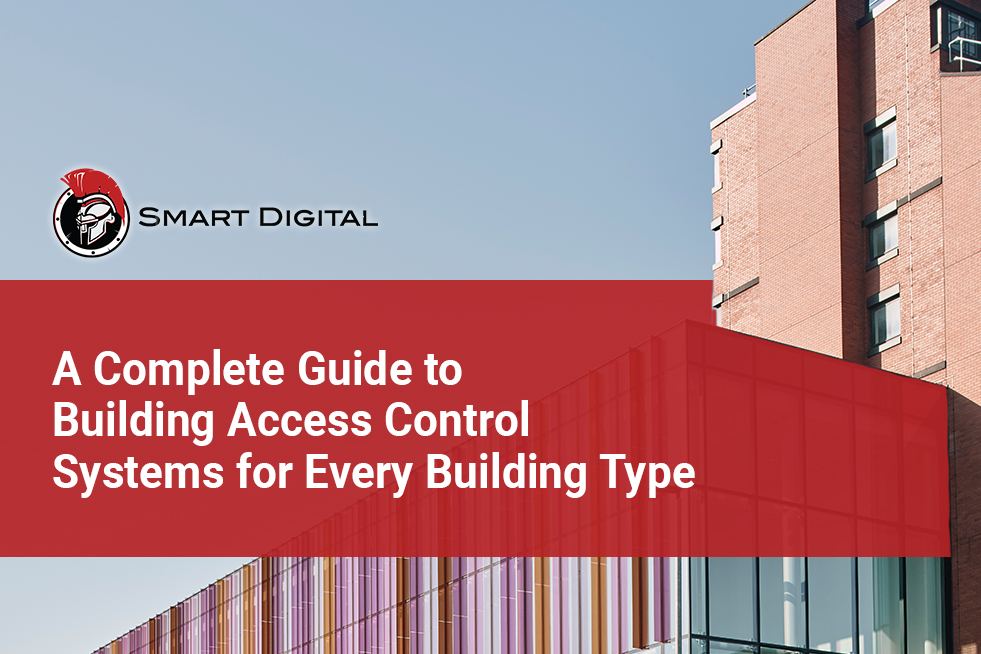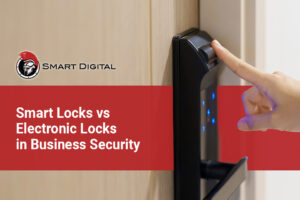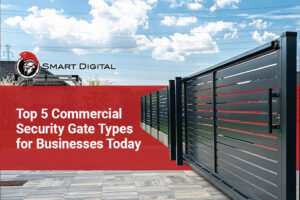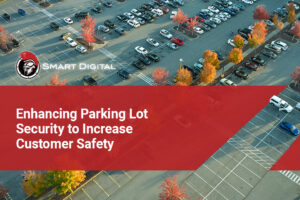Protecting physical assets and ensuring personnel safety have become strategic priorities for organizations. Whether managing a healthcare facility, school, office building, or construction site, the need for reliable access control is clear. Building access control systems allow organizations to manage, monitor, and restrict entry to sensitive areas. With the right configuration, they support operational efficiency and help maintain regulatory compliance. Modern commercial security systems provide the foundation for comprehensive facility protection.
What Is a Building Access Control System?
A building access control system is a combination of hardware and software used to manage who can enter or exit specific areas within a property. These systems authenticate individuals using credentials such as key cards, fobs, PIN codes, biometrics, or mobile apps. Modern systems integrate with surveillance, alarms, and management platforms for comprehensive facility control.
Key components of an access control system include:
- Credential Readers: Devices that verify identity using cards, facial recognition, or other methods.
- Access Control Panels: Electronic units that process credentials and determine entry authorization.
- Door Locks & Gates: Electronic or magnetic locks that respond to valid credential input.
- Software Dashboard: Cloud or on-premise platforms to configure permissions, generate reports, and manage users.
Benefits of Access Control by Building Type
Implementing access control varies with building type. Each property has unique traffic flows, risk levels, and compliance requirements. Understanding these differences helps tailor the security architecture for better performance and cost-efficiency.
Office Buildings
Corporate offices typically prioritize employee safety, visitor management, and data protection. Multi-tenant buildings may need separate credentialing for each organization. Solutions often include turnstiles, mobile credentials, and office security systems with elevator control capabilities.
Healthcare Facilities
Hospitals and clinics must meet HIPAA and patient privacy regulations. Access control helps segment areas such as pharmacies, patient rooms, and server rooms. Medical facility security systems commonly feature audit trails, time-restricted access, and biometric identification.
Educational Institutions
Schools and universities face growing safety concerns. Access control helps monitor student and visitor movement while securing entry points. School security systems require integration with lockdown procedures and surveillance systems for emergency scenarios.
Construction Sites
Sites often lack permanent structures, making traditional security methods ineffective. Construction security systems using mobile gate systems and RFID badges provide scalable site security and monitor workforce hours and compliance.
Retail Buildings
Retail locations require controlled access to stockrooms, manager offices, and cash handling zones. Retail security systems with role-based permissions and remote lock/unlock capabilities help reduce theft and ensure only authorized personnel enter sensitive areas.
Industrial Facilities
Factories and warehouses benefit from access control that limits exposure to hazardous zones and controls operational flow. Industrial security systems utilize heavy-duty RFID, badge systems, and multi-factor authentication to ensure operational security and regulatory compliance.
Government and Public Buildings
High-security environments such as courthouses and municipal buildings require strict access policies. Government security systems combine credential validation, metal detectors, and visitor logs to create layered security measures.
Choosing the Right Access Control System
Not all systems are created equal. Factors such as building size, number of users, and network infrastructure impact which solution is most suitable. Below is a comparison of access control options to support decision-making.
| System Type | Ideal For | Features | Limitations |
| Key Card/FOB | Offices, retail, schools | Cost-effective, scalable | Prone to loss or duplication |
| Biometric | Healthcare, industrial, government | High accuracy, identity confirmation | Privacy concerns, higher cost |
| Mobile App Access | Modern offices, residential | Convenient, touchless | Requires smartphone, internet |
| PIN Code | Construction sites, small offices | Simple, easy to deploy | Codes can be shared |
Common Security Solutions for Buildings
Access control systems rarely function in isolation. For comprehensive security, they are often combined with other technologies:
- Surveillance Integration: Link access logs with video footage for incident reviews.
- Intrusion Detection: Receive alerts when unauthorized access or tampering is detected.
- Alarm Systems: Trigger audible or silent alarms based on access events.
- Visitor Management: Issue temporary credentials and log entries without physical contact.
- Gate Control: Automatically manage vehicle access to parking or perimeter zones.
Scalability and Flexibility in System Design
Modern access control systems must accommodate future growth, remote work, and hybrid spaces. Cloud-based systems allow remote management and software updates without on-site visits. Modular hardware supports phased expansions, making it easier to grow without replacing existing infrastructure.
Important scalability considerations include:
- Support for multiple entry points.
- Cross-location synchronization.
- Remote credential revocation.
- Integration with HR or scheduling software.
Compliance and Data Security Requirements
Building access control systems often handle personal data, making cybersecurity and compliance critical. Depending on the industry, systems must align with HIPAA, PCI-DSS, CJIS, or other regulations. Encryption, role-based access, and audit trails support data protection efforts.
Security policies should include:
- Encrypted credential transmission.
- Multi-factor authentication for administrators.
- Scheduled software patches and updates.
- Data backup and recovery protocols.
Installation and Maintenance Considerations
Successful implementation depends on proper installation and ongoing maintenance. Factors such as door frame types, wiring routes, and server compatibility influence installation complexity. Partnering with experienced professionals ensures optimal setup and configuration.
Maintenance best practices:
- Regularly review user permissions.
- Test access points and alarms.
- Monitor logs for anomalies.
- Train staff on credential policies.
Smart Digital Delivers Secure Access Control Systems
Smart Digital® helps secure Ohio’s commercial, industrial, educational, and public facilities through tailored access control solutions. From RFID entry gates to facial recognition and remote video integration, we build scalable security systems for every building type. As a service-disabled veteran-owned company, our expertise is matched by a commitment to ongoing training, precision installation, and exceptional service.
We provide:
- Access control for schools, universities, and government buildings.
- RFID and mobile-enabled entry systems for offices and retail locations.
- Surveillance camera integration with access logs for event verification.
- Facial recognition, key card, and biometric authentication options.
- Automated gates and remote credential management.
- Ongoing support and system maintenance from certified technicians.
Whether your facility needs an upgrade or a ground-up installation, our team delivers solutions that fit your operational needs and budget.
Ready to secure your facility with trusted access control technology? Contact us today for a no-obligation consultation and request a quote tailored to your building type and security requirements.










